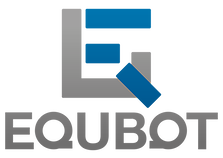From self-driving cars to cognitive robots, artificial intelligence (AI) is seemingly everywhere these days. It’s increasingly found in the investment world as well, embedded in hedge fund strategies and Exchange Traded Funds (ETFs) among other products.
As these applications spread, inevitably, a number of misconceptions have sprung up about what AI is, how it works, and what it can and can’t do. A few of the most common ones would include:
It’s a black box
Not really. True, the algorithms that drive the investment process are proprietary and can be complex, but that’s the case with any number of applications that use higher level mathematics to deliver services or to identify customer needs. In our case, we employ a multi-stage process that combines fundamental and qualitative analysis with AI in seeking to identify mispriced investments. This includes using the IBM Watson computing platform to sort through millions of millions of articles and massive amounts of unstructured alternative data to build predictive models on over 15,000 globally traded companies.
Effectively, we’re employing artificial intelligence to replace the portfolio manager to process more market data and generate more objective investment decisions given a set of investment criteria.
No one knows how it reaches a decision
This is a frequent criticism of AI – it might deliver the desired outcome but no one knows how it got there. This is particularly critical in the investment world, where performance attribution is an important metric. But systems can be built that allow for sufficient transparency to understand how the algorithms reach a conclusion. Further, the data sets that are acted on by AI are determined by humans; those, in turn, broadly reflect pre-determined investment goals. The algorithm then advances by uncovering patterns in a kind of trial and error, a reinforced learning process that is directed towards a specific end – outperforming a market index, for example. It may discover things that might elude a traditional portfolio manager – patterns, relationships, and historical anomalies, for example. Once identified, these patterns can be observed by humans as well, adding transparency.
Most importantly, with an ETF the decisions made by the algorithm are there to be seen every day in the publicly-reported holdings.
The machines are in charge
The goal of any AI investment system is to combine the best qualities of technology with human experience and insight. The algorithms themselves are designed by individuals to operate within certain parameters and to achieve well-defined goals – they are essentially recognizing patterns and predicting outcomes. Adding machine intelligence allows them to learn along the way, and to improve, but it doesn’t alter the fundamental purpose. Algorithms created to enhance the investment process won’t suddenly wander off and start playing chess or Go, for example. They’ll try to improve the process for which they were designed.
Eliminating bias in the investment process is an important consideration, but it is not the same as eliminating all human input, or forgoing the opportunity for a human portfolio manager to analyze and oversee the results. Like computers themselves, the algorithms make it possible to do more, faster – well beyond the capability of any individual portfolio manager or team of analysts – both they are subject to human oversight.
It’s going to take over the world
It’s always something. With advancements in AI the warnings have at times been stark, and some have come from highly respected individuals who have suggested that the technology may eventually pose a threat to human life as we know it.
We’re in the early stages of the AI revolution and, as such, the subject is vulnerable to both unmerited hype and overly ominous warnings. Since we’re dealing in probabilities, we should look to the most likely outcome as AI evolves. Machines will continue to learn, and learn faster. They will recognize more and deeper patterns, some number of which will be at best unhelpful, at worst meaningless (like many of the patterns discovered by humans). In the aggregate, they will likely continue to learn and add value, and the applications will continue to expand. Humans will continue to be in charge for the foreseeable future, in how the algorithms are written, in selecting the datasets that are utilized, and in interpreting how the results are applied.
Investing with AI
We introduced the world’s first active AI-powered ETF in 2017. That was followed by the launch of an AI Powered International ETF, which brought the same technology to investing outside the US. Our quantitative models are built by EquBot with IBM Watson artificial intelligence.
EquBot’s AI Powered Platform ranks thousands of stocks based on the probability of each company benefiting from current economic conditions, trends and world events, and identifies companies for inclusion in portfolios that have the greatest potential for price appreciation.
To date, the AI Powered Platform is performing much as we had hoped. While you can never assume anything in the stock market – and past performance does not predict future returns, as we all know – the results have been promising.
Conclusion
AI has a sci-fi quality that is both mesmerizing and, to some, a little alarming, but it’s just a technology like any other. Investors and advisors tend to be a pragmatic group, however, and their criteria for success is a little different: does it help me build a portfolio and meet my long-term investment objectives? Given the transparency and mark-to-market nature of the investing world and EquBot’s products, that’s something everyone can see for themselves.
